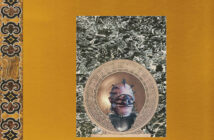1930s and 40s big band jazz plays a reasonably significant role in listening habits around my house, so there was always good reason to approach this compilation with trepidation. The word ‘Doop’ should be enough to make anyone wary of the results of ‘updating’ for the contemporary listener. There is a whole political context, deeply rooted firstly in the oppression of African-Americans and then later in the desire for escapism during the great depression, which, when overlooked, often has the effect of making this type of music seem trite and reduce it to novelty. There’s nothing on this disc to indicate that any of that has been taken into consideration, but the musicians who have reworked these recordings have, on the whole, avoided many of the aural pitfalls that might have trapped them.
It is worth noting that the majority of the tracks here begin with samples from the original music before the contemporary sounds kick in. Songs are generally treated with respect with large slabs of both singing and instrumental interplay being incorporated from the originals, rather than just one or two bar hooks and this certainly helps keep interest. In spite of the 11 different producers across the 16 tracks, there’s a solid consistency to the mostly house based sounds. Individual differences come through in Jimi Bazooka’s stumbling hi-hat shuffles on ‘Cement Mixer’, the phased filtering of Berry Dept’s ‘Figs and Dates’ (whose sexual innuendo is given the grinding rhythm it deserves), or the contemporary r’n’b groove of Foxtrot Parader’s ’20 Long Years’. Some things – most notably Lindstrom’s reworking of ‘Caravan’ which veers scarily close to ‘Hooked On Jazz’ territory – don’t work but, on the whole, the quality of the party beats are very high.
Ultimately, the question remains as to whether or not it is necessary to create this music? There is a nagging sense of cul-de-sac creativity involved. And equating early 21st century hedonism with the escapism of the 1930s seems a very patronising and possibly offensive leap. On a purely aesthetic level, however, the album sidesteps these issues through the strength of its production. The new millennium bits stand up under scrutiny alongside the classic bits. What might have been cheesy exploitation isn’t. It has led to lots of dancing and jumping around my loungeroom, and that’s as good a recommendation as any.
Adrian Elmer



